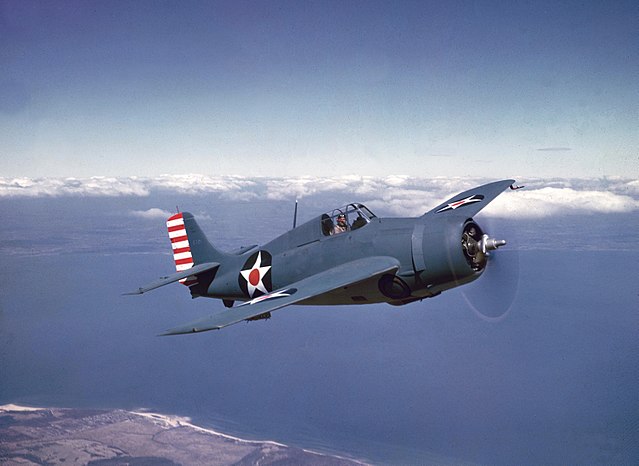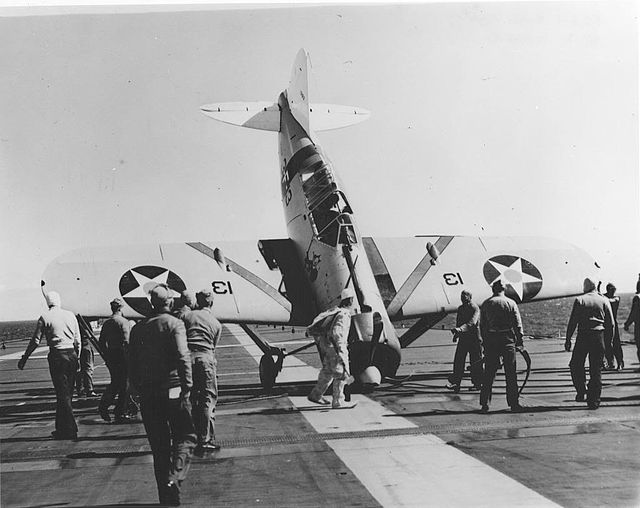The Grumman F4F Wildcat is an American carrier-based fighter aircraft that entered service in 1940 with the United States Navy, and the British Royal Navy where it was initially known as the Martlet. First used by the British in the North Atlantic, the Wildcat was the only effective fighter available to the United States Navy and Marine Corps in the Pacific Theater during the early part of the Second World War. The disappointing Brewster Buffalo was withdrawn in favor of the Wildcat and replaced as aircraft became available.
Grumman F4F Wildcat
The XF4F-3 in 1939; it was written off in a fatal accident on 16 December 1940
An early F4F-3 with prop spinner and cowling guns
A Fleet Air Arm Wildcat in 1944, showing "invasion stripes"
The Brewster F2A Buffalo is an American fighter aircraft which saw service early in World War II. Designed and built by the Brewster Aeronautical Corporation, it was one of the first U.S. monoplanes with an arrestor hook and other modifications for aircraft carriers. The Buffalo won a competition against the Grumman F4F Wildcat in 1939 to become the U.S. Navy's first monoplane fighter aircraft. Although superior to the Grumman F3F biplane it replaced, and the early F4Fs, the Buffalo was largely obsolete when the United States entered the war, being unstable and overweight, especially when compared to the Japanese Mitsubishi A6M Zero.
Brewster F2A Buffalo
Brewster XF2A-1 prototype
LT John S. Thach tipped this F2A-1 onto its nose on Saratoga, March 1940
F2A-3s serving as U.S. Navy training aircraft at NAS Miami, 1942–1943








